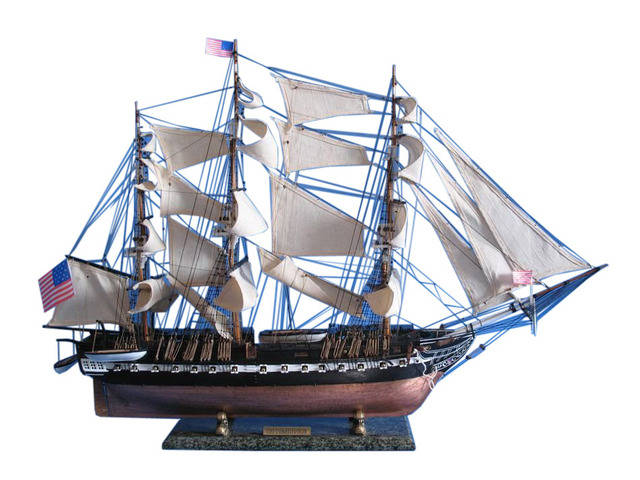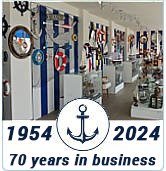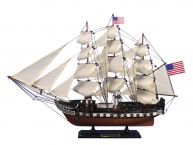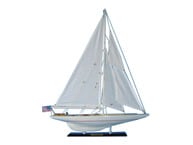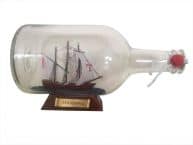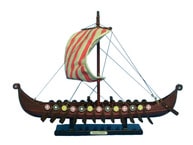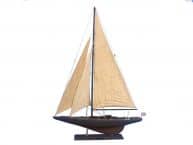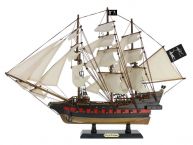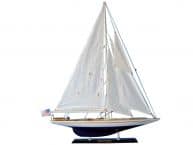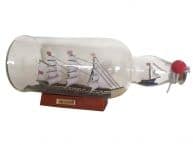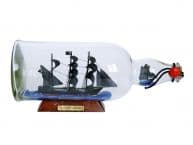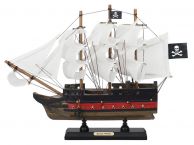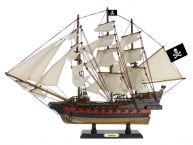|
|
Customers Also Shopped

|
|

|
USS Constitution Limited Tall Model Ship 38"
At the end of the American Revolution, in 1783, the
Designed to be the perfect confluence of strength, speed, and firepower, master shipbuilder Joshua Humphreys set out to create ships that could compete with the massive fleets of existing European naval powers. At 204 feet long, with a 43 foot beam and three masts each towering over 170 feet, the 44-gun, 1576-ton frigate could cruise at a clipping 13 knots (15 mph). Embarking on July 22, 1798, sailing from
In 1801 Yusuf Karamanli of Tripoli made demands for increased tribute pay from the northern Barbary States, increasing the danger for American merchant ships sailing throughout the Mediterranean; two years later Thomas Jefferson ordered the Constitution to join the blockade in Tripoli. Having been recommissioned on May 13, 1803, and after repairs in which Paul Revere provided new copper for her hull, the Constitution joined the third blockade of
Returning to the United States victorious, the Constitution underwent repairs from 1907 to 1909, readying her to perform as the Flagship of the "Northern division of ships for the protection of the American coast;" positioning her to become a key element of the war that was soon to follow. After coming under command of Captain Isaac Hull, and sailing along the coasts of
In the early afternoon of August 19, 1812, as the Constitution patrolled the Atlantic, Captain Hull and his crew sighted a large ship causing them to follow in pursuit, attempting to identify the vessel. Once within distance it became apparent that the two ships were on opposing sides, the mystery ship identified as the HMS Guerriere. As the two ships approached the Guerriere began to fire upon the Constitution, prompting Captain Hull to bravely maneuver his ship within 25 yards of her attacker and order a massive broadside attack of grape and round shot. After taking out the Guerriere's mizzenmast along with multiple crew, the Guerriere sailed errantly into the Constitution, locking the two ships in a battle to the death. Continuing the broadside assaults, even as the two ships lay entwined, Captain Hull was able to destroy the ship's main mast while half of the Guerriere's crew was killed. After pulling away from the wounded British ship, Captain Hull spied a signal shot and returned to accept the Guerriere's surrender. Victorious in battle, the Constitution was also granted her nickname after an exuberant American sailor reportedly shouted "huzzah, her sides are made of iron!" - Old Ironsides was born.
Continuing her actions against the British, under the new command of William Bainbridge, Old Ironsides set sail for the British shipping lanes off the coast of Brazil. In a brief battle with the HMS Java the Constitution's helm was destroyed, prompting Captain Bainbridge to order his crew to steer with the tiller. Though without much control, the Constitution was able to affect some quick repairs at sea before returning to the battle and forcing the surrender of the Java. Two years later, following her victory over the HMS Cyane and HMS Levant, the Constitution was again placed in dry dock for repairs as war with
At this time the ship had already reached legendary status, though at 31 years old she was twice the age of any other active ship. With an estimated $157,000 of repairs needed, her future in doubt, the Boston Advertiser printed an inaccurate article claiming that she would be scuttled, much to the dismay of many Americans. Two days later Oliver Wendell Holmes published his poem "Old Ironsides," prompting a severe public outcry, which eventually lead to the approval of the repair costs. Emerging once again from dry dock, the Constitution was in better shape than ever, ready to sail in a more diplomatic capacity. Making way on May 29, 1844, the Constitution would begin a cruise that would take her around the world, astonishingly sailing more than 52,000 miles.
Carrying America’s Ambassador to Brazil, the Constitution reached Rio de Janeiro on August 2 before again setting sail on September 8. Captained by the legendary John "Mad Jack" Percival, the ship headed for African waters, docking in
Arriving in the Hawaiian Islands on November 16, 1845, Captain Percival was greeted with news that the Constitution was needed in Mexico as the United States expected the outbreak of war. Informed by Commodore John D. Sloat that the United States was preparing for war following the annexation of Texas, the Constitution was reprovisioned for a six month tour and departed across the Pacific. Arriving in Mazatlan, Mexico on January 13, 1846, the crew of the Constitution would wait, docked for three uneventful months, before ordered to return to home port. Leaving on April 22, Captain Percival was later informed that war had broken out on May 13, less than a month after the Constitution’s departure. Ending her around the world trip in three years, the Constitution was sent to Africa throughout the mid 1850s to act as the African Squadron Flagship, the last military duty the legendary vessel would see as an active combatant.
Returning to Portsmouth, New Hampshire in June of 1855 the ship was once again in need of repair, placed in dry dock and refitted as a school ship. In August of 1860 she was ordered to the United States Naval Academy in Annapolis, where she began her service as a training ship throughout the duration of the Civil War. Until September 1871 the Constitution served in this training capacity, transitioning gracefully into the second phase of her storied career. Following the conclusion of the war, Old Ironsides was once again overhauled, this time to participate in the 1878 Paris Exposition. After a rough voyage, both to France and back, the Constitution returned home on May 24, 1879. At almost 100 years old, the Constitution was the last remaining ship from the initial Naval Armament Act, leading to an effort to restore and present the vessel as a living museum. In 1897 the Constitution returned to Boston to celebrate her centennial, making Charlestown Navy Yard her home port for the remainder of her career. In 1906 repairs began, and by 1907 the Constitution was officially deemed a museum ship, a title she maintains to this day. By 1927 85 percent of the ship required repair and renewal and after a lengthy stay in dry dock, on July 1, 1931 she was once again opened for educational tours.
With such a long and legendary career, the USS Constitution remains as amazing as ever, having been restored to her original design specifications in 1992. On July 21, 1997 she sailed under her own power for the first time in 116 years, and beginning in 2007 she underwent restorative action to return her to the classic design she boasted during the War of 1812. In 2009 she was designated as an "American Ship of State," for use in diplomatic and international matters; a fitting title given that the treaty to end the war with Tripoli was signed aboard her decks in 1805. With her gleaming copper hull restored, her historic paintjob redone, and her wood beams replaced to make her seaworthy, the USS Constitution is an enduring icon of American history. At more than 200 years old she is the oldest commissioned naval vessel in the world, and captained by Commander Matt Bonner, she continues to act in a historical and educational capacity. With a crew of 60 active duty Navy personnel she rests at Pier 1 of the former Charlestown Navy Yard, and remains open to the public with her fabulous tours. From the Barbary Wars to her epic battles in the War of 1812, her around the world voyage to her position as a museum ship, the USS Constitution has played a vital role in the development of the American Navy and indeed the country itself. Serving with honor and distinction, the USS Constitution, “Old Ironsides” herself, remains docked proudly today just as she was more than 200 years ago.
 Handcrafted
Handcrafted Handcrafted
Handcrafted Handcrafted
Handcrafted Handcrafted
Handcrafted Handcrafted
Handcrafted Handcrafted Model Ships
Handcrafted Model Ships


